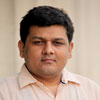Population explosion in India is a challenge as desired results have not been achieved in family planning leading to food scarcity and hunger
World population day is celebrated on July 11 every year and as per the census of 2011— the total population of the world has become seven billion as compared to 2.5 billion in 1950.
Such a population is a challenge as well as opportunities with implications on sustainability, urbanization, access to health services and youth empowerment.
Population explosion in a country like India is a challenge as desired results have not been achieved in family planning leading to food scarcity and hunger, unemployment, higher infant mortality rate, poor education leading to school drop outs.
At 1.2 billion plus and growing at breakneck speed of about 2,000 births an hour, India’s population may be leveraged to draw democratic dividends. But considering the sluggish human development indices, rising population is becoming a cause of worry. Amidst this, the country’s birth control programme has not been able to reap the desired results, according to assessments by a health body — National Institute of Health and Family Welfare (NIHFW).
NIHFW suggests that against a target of total fertility rate (TFR) of two in 2015, current assessments project it as decreasing to 2.2 in 2017. The target of two TFR can be achieved only by 2022. The target for the infant mortality rate (IMR) in the 12th five year plan has been set at less than 27 per 1000 by 2017. But according to current trends in states, especially Madhya Pradesh, Assam, Uttar Pradesh and Rajasthan, the IMR is more than 50 per 1000. Other states such as Haryana, Andhra Pradesh, Chhattisgarh and Bihar too are faring poorly in IMR targets.
In maternal mortality ratio — India is performing poorly as most of the states have higher maternal mortality rate and India targets to achieve less than 100 by 2017. Bihar, Jharkhand, Madhya Pradesh and Chattisgarh have more than 200 maternal mortality rate where as Assam, Uttar Pradesh and Uttarakhand touches to 300. Only Kerala has a good record and the maternal mortality rate is only 66. Gujarat and West Bengal is at 122 and 117, respectively.
NIHFW states that a higher density of population in a state has a higher percentage of population living below the poverty line. Bihar, Chattisgarh, Jharkhand, Assam and Uttar Pradesh have 37.7 per cent, which is much higher than the all India percentage of poverty line which is 29.8 per cent. Kerala and Gujarat have a better record — in Kerala 12 per cent people are below the poverty line where as in Gujarat it is 23 and in Rajasthan it is 24.8 per cent.
“For India, it will be a crucial situation if the growth indices do not rise. For family planning targets to achieve the desired results, it requires a mammoth effort to improve developmental goals to bring the targets back on track,” said DR RK Srivastava, senior policy analyst at NIHFW.
The NIHFW report underlines that high fertility leads to increased malnutrition, infant deaths and maternal deaths, which impacts negatively on family planning.
At 462.9 grams per day, the net per capita availability of food grains in India is much lower than the world average of 980 grams per day. Srivastava points out that such a situation leads to unemployment and more pressure on education systems.
India is at the forefront of the global response to expand access to contraceptive choice through its commitment to forward planning, 2020, which is a global partnership of government, donors, civil society to create innovation and opportunity to advance FP and drive economic development.
India’s population growth in the past reflects the following trends —
While it showed a stagnant growth between 1891-1921, between 1921 and 1951, steadier growth was witnessed. From rapid high growth in 1951-1981, the population began showing signs of slowing down between 1981 and 2011 due to an improved focus on family planning.
In 2000, India became a signatory to the millennium declaration at the United Nations Millennium Summit.
In the last century, the urban population on universe has increased to 31 per cent. According to the UN estimates, this number may go up 50.6 per cent by 2045.
